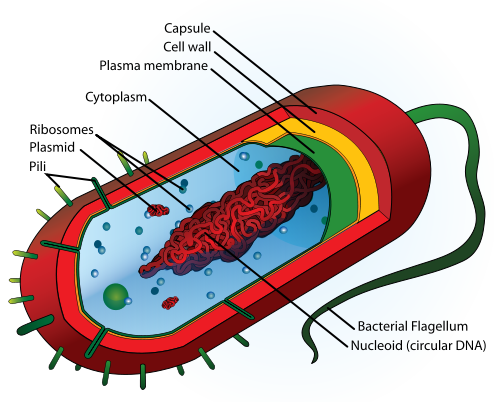Hey guys. Here is a Gloster of a cell community represented by the Indianapolis Colts!
Monday, October 25, 2010
Friday, October 15, 2010
The "Good" Bacteria: Lactobacillus casei
Lactobacillus casei is one of the many very helpful bacteria within our bodies. I chose this bacteria because of the many bacteria in the world, many of the well known have a negative effect on animals and humans. I decided that it would be best to explain how L. casei is a very helpful and beneficial bacteria.
L. casei is a genus of Lactobacillus, and is a bacteria found in the intestine and mouth. As a bacteria that produces lactic acid, it helps in multiplying and increasing the number of other desirable bacteria within the host organism. This probiotic - a live microorganism that is beneficial to the host organism - aids in producing L. acidophilus which is another very helpful bacteria within animals and humans that improves digestion reduces lactose intolerance and constipation. L. casei is oftenly used for industrial reasons and is mainly found in dairy products. For example, L. casei is a main component in the ripening of cheddar cheese and is also mainly found in a Japanese drink called Yakult which is something like a fermented milk.
 |
| SEM image of L. casei |
 |
| Image of Lactobacillus |
L. casei is a rod shaped bacteria, and contains all the necessary organelles in a prokaryote and can range from anywhere between .5 - 20micrometers. This bacteria contains a flagella, which aids in mobility, a pili which helps to adhesive to other cells, a capsule which sorrounds the cell wall and prevents anything good from leaving the cell and anything bad from entering it. It also consists of a cell wall which aids in the structure of the cell, a cytoplasmic membrane, which is a "strainer" found inside the cell wall that controls what enters and exits the cell, a mesosome, which provides a place for DNA replication, a nucleoid, which is an area that contains most of the DNA, and plasmid, which are smaller regions that contain small amounts of DNA, and a cytoplasm, which is a cell inside the cell membran that contains everything within the cell.
< Structure of a prokaryote (L. casei).
Sources
Wednesday, October 6, 2010
Macromolecules Lab Response
 To start, I thought this lab was very entertaining and surprising. The entertainment came from the excitement of running different tests on different substances. I thought this was entertaining because everyone was very excited to complete their first lab that involved burners, goggles, and test tubes. There definitely an up-beat commotion in the classroom. However, the surprising part comes from the results of the tests. The results of the foods we tested varied from my predictions and were very unexpected. When I looked at the results, I questioned myself. Did we make a mistake? Is this really the food we think it is? Although once the reason why each result showed the way it did, it all started to make sense. We realized there may have been some inaccuracies, and also that some results were actually very true. Even though some of the results were complicated and confusing, not all of them were. For instance, my predictions for the potato exactly matched the results. The potato was a fairly simple food to test and the results were understandable. The food that I tested was egg whites. My predictions matched up pretty well with my personal results. However, what caught me off guard was that it did not contain protein. My partner and I were very appalled. We were confused because people usually say that eggs is a good source of protein, but as we found out, it doesn't contain protein. Even though some results were misleading, overall, this lab was very fun and helpful lab.
To start, I thought this lab was very entertaining and surprising. The entertainment came from the excitement of running different tests on different substances. I thought this was entertaining because everyone was very excited to complete their first lab that involved burners, goggles, and test tubes. There definitely an up-beat commotion in the classroom. However, the surprising part comes from the results of the tests. The results of the foods we tested varied from my predictions and were very unexpected. When I looked at the results, I questioned myself. Did we make a mistake? Is this really the food we think it is? Although once the reason why each result showed the way it did, it all started to make sense. We realized there may have been some inaccuracies, and also that some results were actually very true. Even though some of the results were complicated and confusing, not all of them were. For instance, my predictions for the potato exactly matched the results. The potato was a fairly simple food to test and the results were understandable. The food that I tested was egg whites. My predictions matched up pretty well with my personal results. However, what caught me off guard was that it did not contain protein. My partner and I were very appalled. We were confused because people usually say that eggs is a good source of protein, but as we found out, it doesn't contain protein. Even though some results were misleading, overall, this lab was very fun and helpful lab.
Subscribe to:
Comments (Atom)

